Rui Bai
Simultaneous Polysomnography and Cardiotocography Reveal Temporal Correlation Between Maternal Obstructive Sleep Apnea and Fetal Hypoxia
Apr 17, 2025Abstract:Background: Obstructive sleep apnea syndrome (OSAS) during pregnancy is common and can negatively affect fetal outcomes. However, studies on the immediate effects of maternal hypoxia on fetal heart rate (FHR) changes are lacking. Methods: We used time-synchronized polysomnography (PSG) and cardiotocography (CTG) data from two cohorts to analyze the correlation between maternal hypoxia and FHR changes (accelerations or decelerations). Maternal hypoxic event characteristics were analyzed using generalized linear modeling (GLM) to assess their associations with different FHR changes. Results: A total of 118 pregnant women participated. FHR changes were significantly associated with maternal hypoxia, primarily characterized by accelerations. A longer hypoxic duration correlated with more significant FHR accelerations (P < 0.05), while prolonged hypoxia and greater SpO2 drop were linked to FHR decelerations (P < 0.05). Both cohorts showed a transient increase in FHR during maternal hypoxia, which returned to baseline after the event resolved. Conclusion: Maternal hypoxia significantly affects FHR, suggesting that maternal OSAS may contribute to fetal hypoxia. These findings highlight the importance of maternal-fetal interactions and provide insights for future interventions.
CEHA: A Dataset of Conflict Events in the Horn of Africa
Dec 18, 2024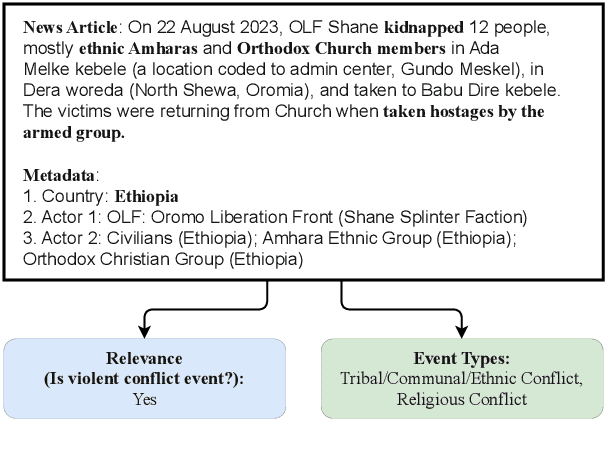


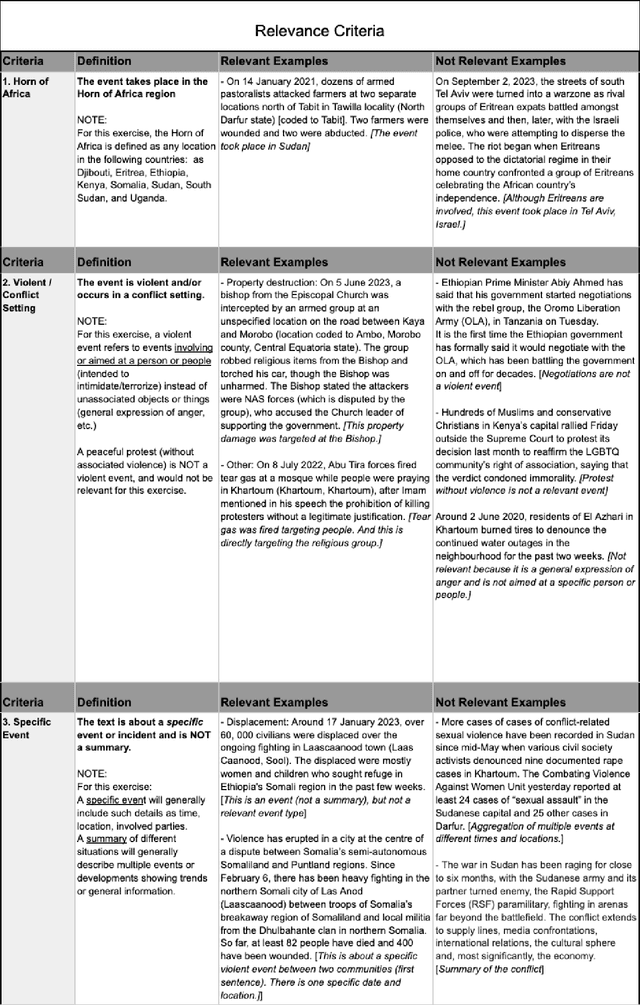
Abstract:Natural Language Processing (NLP) of news articles can play an important role in understanding the dynamics and causes of violent conflict. Despite the availability of datasets categorizing various conflict events, the existing labels often do not cover all of the fine-grained violent conflict event types relevant to areas like the Horn of Africa. In this paper, we introduce a new benchmark dataset Conflict Events in the Horn of Africa region (CEHA) and propose a new task for identifying violent conflict events using online resources with this dataset. The dataset consists of 500 English event descriptions regarding conflict events in the Horn of Africa region with fine-grained event-type definitions that emphasize the cause of the conflict. This dataset categorizes the key types of conflict risk according to specific areas required by stakeholders in the Humanitarian-Peace-Development Nexus. Additionally, we conduct extensive experiments on two tasks supported by this dataset: Event-relevance Classification and Event-type Classification. Our baseline models demonstrate the challenging nature of these tasks and the usefulness of our dataset for model evaluations in low-resource settings with limited number of training data.
Make Your Decision Convincing! A Unified Two-Stage Framework: Self-Attribution and Decision-Making
Oct 20, 2023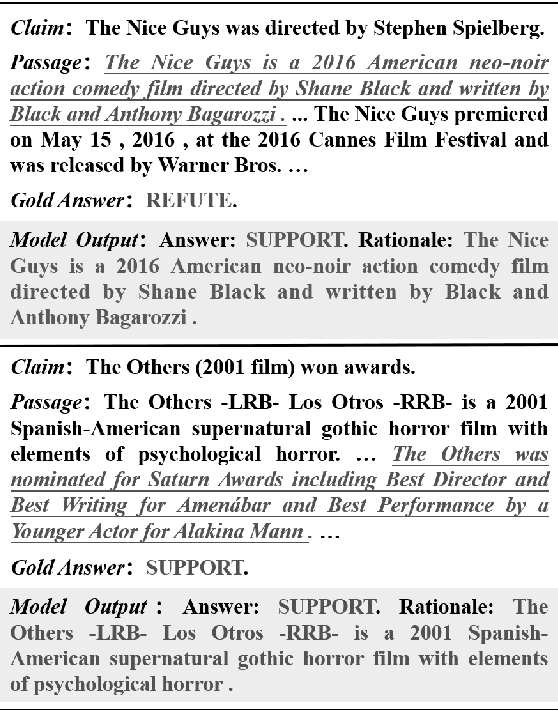
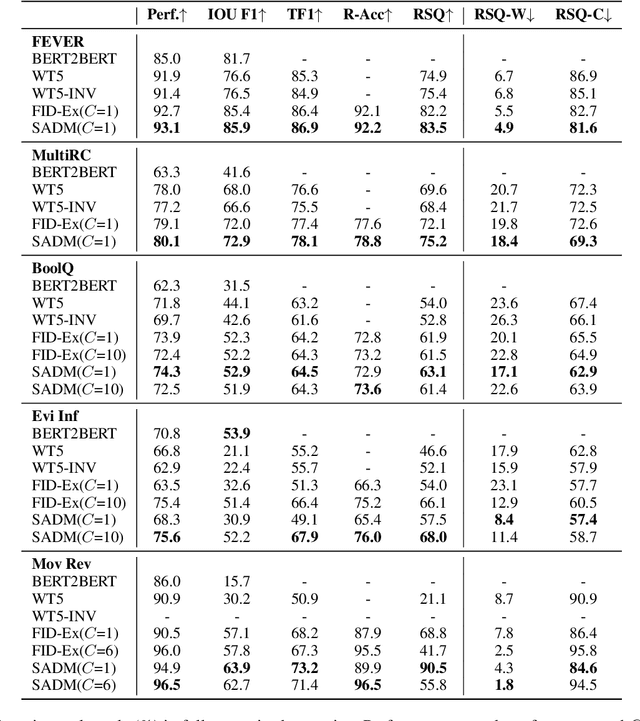
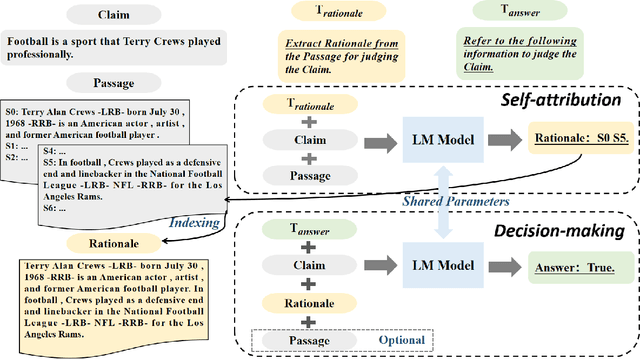
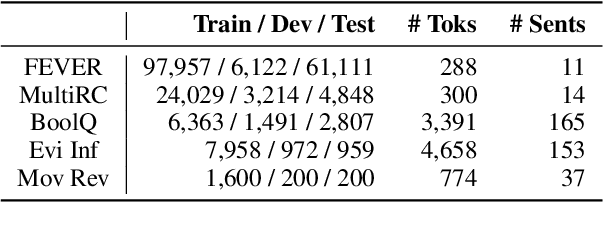
Abstract:Explaining black-box model behavior with natural language has achieved impressive results in various NLP tasks. Recent research has explored the utilization of subsequences from the input text as a rationale, providing users with evidence to support the model decision. Although existing frameworks excel in generating high-quality rationales while achieving high task performance, they neglect to account for the unreliable link between the generated rationale and model decision. In simpler terms, a model may make correct decisions while attributing wrong rationales, or make poor decisions while attributing correct rationales. To mitigate this issue, we propose a unified two-stage framework known as Self-Attribution and Decision-Making (SADM). Through extensive experiments on five reasoning datasets from the ERASER benchmark, we demonstrate that our framework not only establishes a more reliable link between the generated rationale and model decision but also achieves competitive results in task performance and the quality of rationale. Furthermore, we explore the potential of our framework in semi-supervised scenarios.
 Add to Chrome
Add to Chrome Add to Firefox
Add to Firefox Add to Edge
Add to Edge